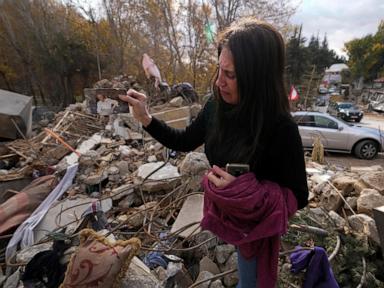ARTICLE AD BOX
Israeli airstrikes targeted southern and eastern Lebanon, as well as the capital city of Beirut, on Monday, killing 450 people and injuring over 1,500. This was the deadliest Israeli attack on Lebanon since the 2006 war with Hezbollah. It came just days after thousands of pagers, still used in the country, exploded, killing 32 people and injuring thousands. Lebanon has blamed Israel for the attack.
Fears of a broader war loom large, with Israeli Prime Minister Benjamin Netanyahu urging civilians to evacuate affected areas. The latest Israeli onslaught displaced more than 1.10 lakh Lebanese and around 60,000 Israelis.
The conflict between Israel and Lebanon goes back to 1982. To understand the current situation, we must revisit the First Lebanese War.
The First Lebanese War
In March 1978, members of the Palestine Liberation Organization (PLO) infiltrated Israel, leading to the murder of an American tourist and the hijacking of a bus, resulting in the deaths of 34 hostages. In retaliation, Israeli forces invaded Lebanon, targeting terrorist bases. After two months, they withdrew, allowing United Nations peacekeepers to enter.
Violence continued to escalate, with repeated PLO attacks and Israeli reprisals. A ceasefire brokered by the US in July 1981 quickly fell apart, as the PLO conducted 270 terrorist operations in Israel, the West Bank, Gaza and along the Lebanese border, resulting in 29 Israeli deaths and over 300 injuries. At the time, an estimated 15,000 to 18,000 PLO members were stationed across Lebanon, armed with significant quantities of light and heavy weaponry.
The tipping point occurred in June 1982 when a Palestinian terrorist group attempted to assassinate Israel's Ambassador to Great Britain. In response, the Israel Defense Forces (IDF) launched ‘Operation Peace for Galilee' on June 6, aimed at terrorists.
The initial success of the Israeli operation aimed for broader objectives, including the expulsion of the PLO from Lebanon and the establishment of a peace treaty. Lebanon's President Amin Gemayel signed a treaty in 1983, but Syria intervened, forcing him to retract. Many Arab residents in southern Lebanon suffered due to the strong presence of PLO.
As the IDF surrounded Beirut, civilian suffering increased due to the PLO's refusal to surrender. An agreement for a ceasefire was reached to facilitate a peaceful PLO withdrawal, but the PLO's continual demands complicated negotiations. They engaged in controlled violations of the ceasefire, seeking to provoke Israeli retaliation, while strategically positioning themselves behind civilians.
Despite media scrutiny, Israel worked towards expelling the PLO from Beirut, resulting in the deployment of an international coalition to oversee their evacuation. By September 1, 1982, approximately 14,000 PLO fighters left. Among them was Yasser Arafat, the chairman of the PLO, who departed for Tunisia.
The war sparked intense debate within Israel, and for the first time, there was no unified consensus for it. Prime Minister Menachem Begin eventually resigned amid public demands to end the conflict. In 1984, Israel withdrew its troops but left a token force to support the South Lebanese Army. The war cost 1,216 Israeli lives and left a lasting legacy of violence and instability in the region, highlighting ongoing challenges for the two countries.
.png)
 2 months ago
2
2 months ago
2








 English (US)
English (US)